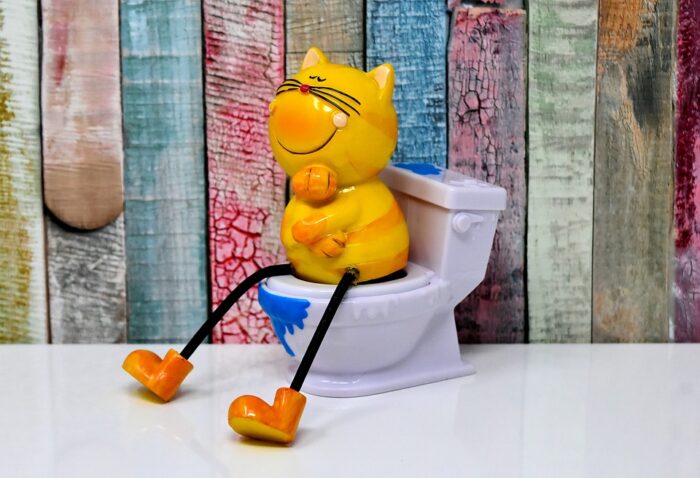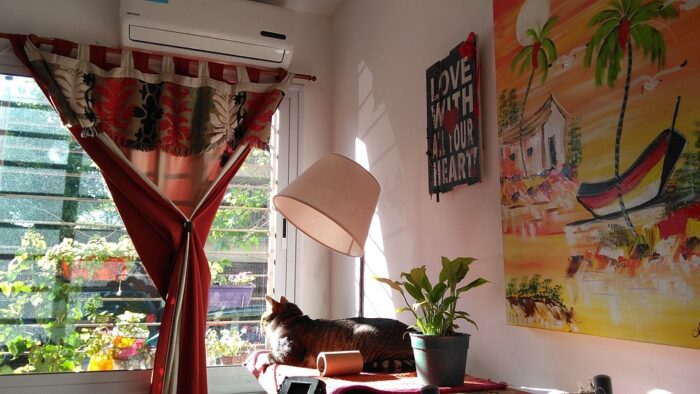Animals are an important part of our lives. For many of us, pets are members of the family, just like children. Providing a dog or cat with all the veterinary care, food, toys and other items it needs are ways we thank them for their unconditional love and show them how much we care. Some pet parents even go a step further and create special spaces just for their furry friends where they can relax and play.
Having a room just for your cat is a great way to pamper them, but there are many practical benefits too. In addition to having a discreet location to keep the litter box, a quiet, dedicated area outfitted with stimulating toys, hiding spots and soft bedding can help your cat feel secure and stave off boredom. It also helps curb behavior problems and provides a safe place to confine them when it’s necessary.
How to Design a Room for your Cat
Where should you put your cat room?
When designing a space for your feline friend, location and security are more important than size. Any room can work as long as it is properly enclosed to keep out the elements and prevent escape. A small area like a sunroom or unused office is ideal, though some owners have set up entire bedrooms as kitty friendly spots.
Whichever area you choose, make sure there is a door that closes well. This will allow you to shut your cat inside if they need to be away from guests, repair technicians or other pets. If your cat is accustomed to spending time outside, you could even consider installing a pet door for easy access if it’s possible with your home’s layout.
Setting up a cat room
While there are many different ways to configure your cat’s room, every design has a few key things in common. Some of the most basic considerations include where your cat will want to relax or hide, making sure they have access to essentials like litter boxes, food and water, and that there are plenty of options for entertainment.
Furniture for felines
Often the easiest place to start when planning your design is with the largest items. For cats, that can include carpeted posts or trees, window seats, sofas, hiding places like cubes or fabric tents or even shelving. It’s best to have a few different options for your pet to choose from, so try to pick pieces with different textures, heights or sizes for variety.
Cats like to hang out in high places where they can observe what’s going on. Many enjoy watching birds outside or napping in the sunlight. Some owners attach shelving to the walls around the room for their pet to explore. Prebuilt cat trees that feature multiple platforms and places to scratch are also popular with felines. If you can, position these near windows to give your kitty the best view available.
Although this room is primarily for your pet, be sure to include somewhere for you to sit as well. Choose pet friendly furniture that will be easy to clean and can withstand claws, climbing and jumping. Washable slipcovers or throws also help protect upholstery from damage and create a cozy place for your pet to lounge or nap.


Building a bistro and bathroom for your cat
It’s vital that your cat has access to fresh water while enjoying their special room. Many pet parents serve meals here as well, so be sure to set aside a small spot for dishes. Owners with busy schedules or with pets that prefer moving water may want to try an automatic feeder or water fountain instead. However, use gravity feeders with caution. Constant access to food can lead to unhealthy weight gain.
Cats can be notoriously finicky about their litter boxes. Veterinarians recommend that owners have a box for every cat in the home plus one extra. Although your kitties may decide to share facilities, offering many locations can reduce territorial marking and elimination on other surfaces. Ensure their bathroom experiences are positive by cleaning boxes daily and washing them thoroughly once a week.
Choose a box and litter appropriate for the age, size and preferences of your cat. Covered models can help contain messes and dust from clay litters and provide extra privacy. Whichever type you choose, your pet should be able to fit inside while standing up on all fours. Kittens and older felines may need boxes with lower sides that are easier for them to step over.
Supply Storage and Entertainment
Just like people, pets can have lots of stuff. When setting up your cat’s room, organize brushes, medications, collars and clothing so they are easy to find when you need them. Felines also love to have fun, so consider leaving toys that are safe for solo use in areas that they can reach. Use a cute basket or extra pet bed to corral fur mice, pom pom balls and catnip pouches while keeping the space neat.
Combining Fun and Function
Having a dedicated cat room in your home will help keep your furry family members confined and safe when needed. Designing a quiet spot to just for your cats to play and relax is also a great way to express your love for them. Tons of different decor and furniture options make putting together your kitty’s private pad easy and fun. With a little work and imagination, you can create the perfect spot to enjoy together.

